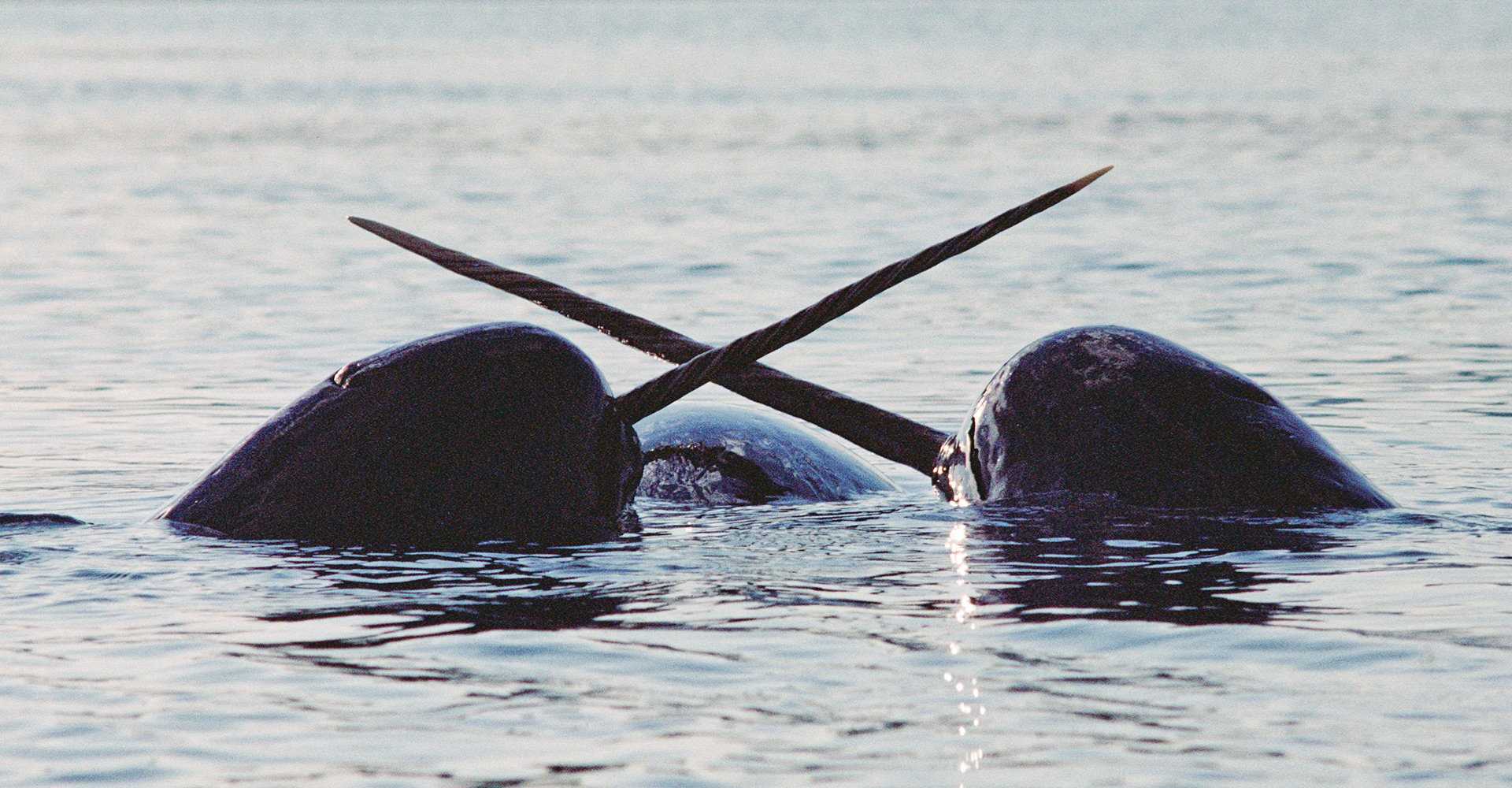Like all iconic Arctic species, narwhals are incredibly connected to the ebb and flow of sea ice. They spend their entire lives among icebergs, migrating from the coast, where they find food along the ice edge in summer, to the deep offshore waters covered in pack ice in winter. Scientists guess they’re following their food—mainly Greenland halibut, but also cod, squid, and shrimp—that, as suction feeders, narwhals swallow whole.
Get Inspired By Photos, Videos, Webinars, Stories, And Exclusive Offers.
Sign Up
In winter, up to 97% of their habitat’s open water is frozen over, and narwhals cluster around shifting cracks in the ice—called leads—that they use as breathing holes. Because there’s not much room to swim at the surface during the colder months, the whales hunt in the water column and on the sea floor, diving down to amazing depths up to 25 times a day. One of the deepest diving whales, narwhals have been recorded at 5,827 feet—more than a mile down. Special adaptations like compressible ribs and high blood oxygen levels help them withstand underwater pressure up to 150 times that on Earth’s surface! They spend a remarkable amount of time far below the surface and far offshore, making narwhal sightings extremely rare—for both expedition cruisers and scientists alike. There’s a long way to go before we truly understand this stealth, seldom-seen species.
Take their defining feature: their legendary tusk. Science still doesn’t know the evolutionary purpose of it—a way to impress females? a tool for punching holes in sea ice? But technology is helping to peel back some of the mystery. Recent drone footage suggests that one use for the tusks is to tap and stun fish, rather than spearing them as once thought.
Discover more facts about that tremendous tusk:









